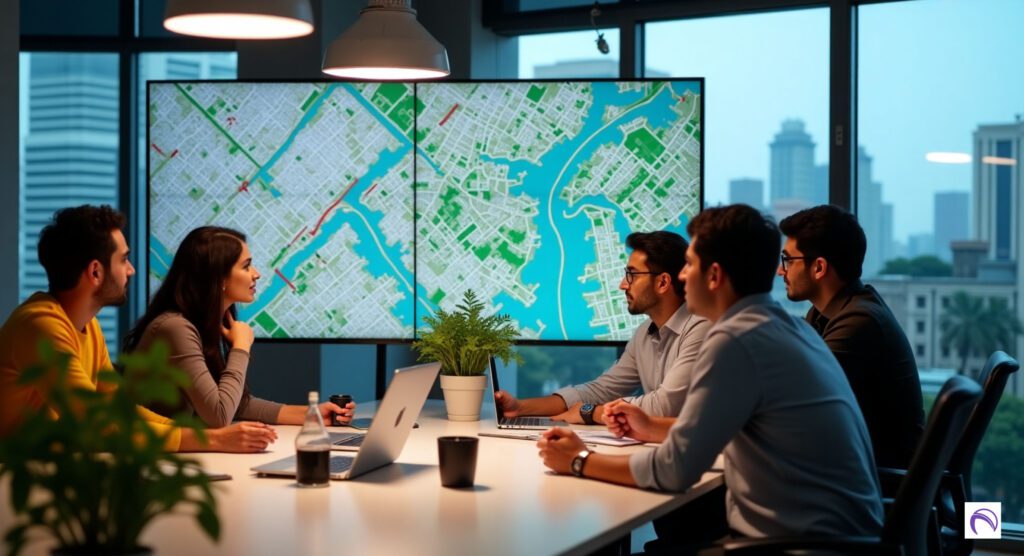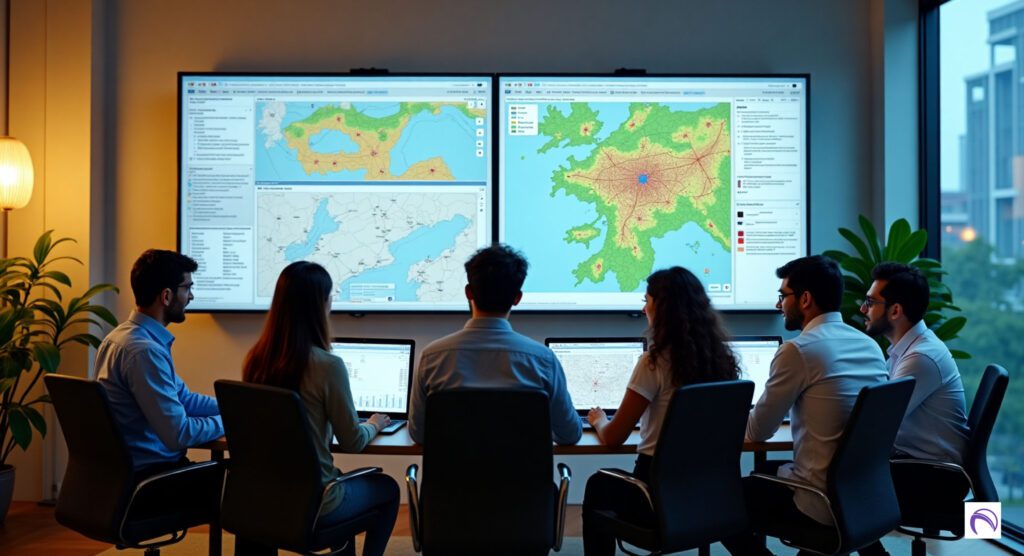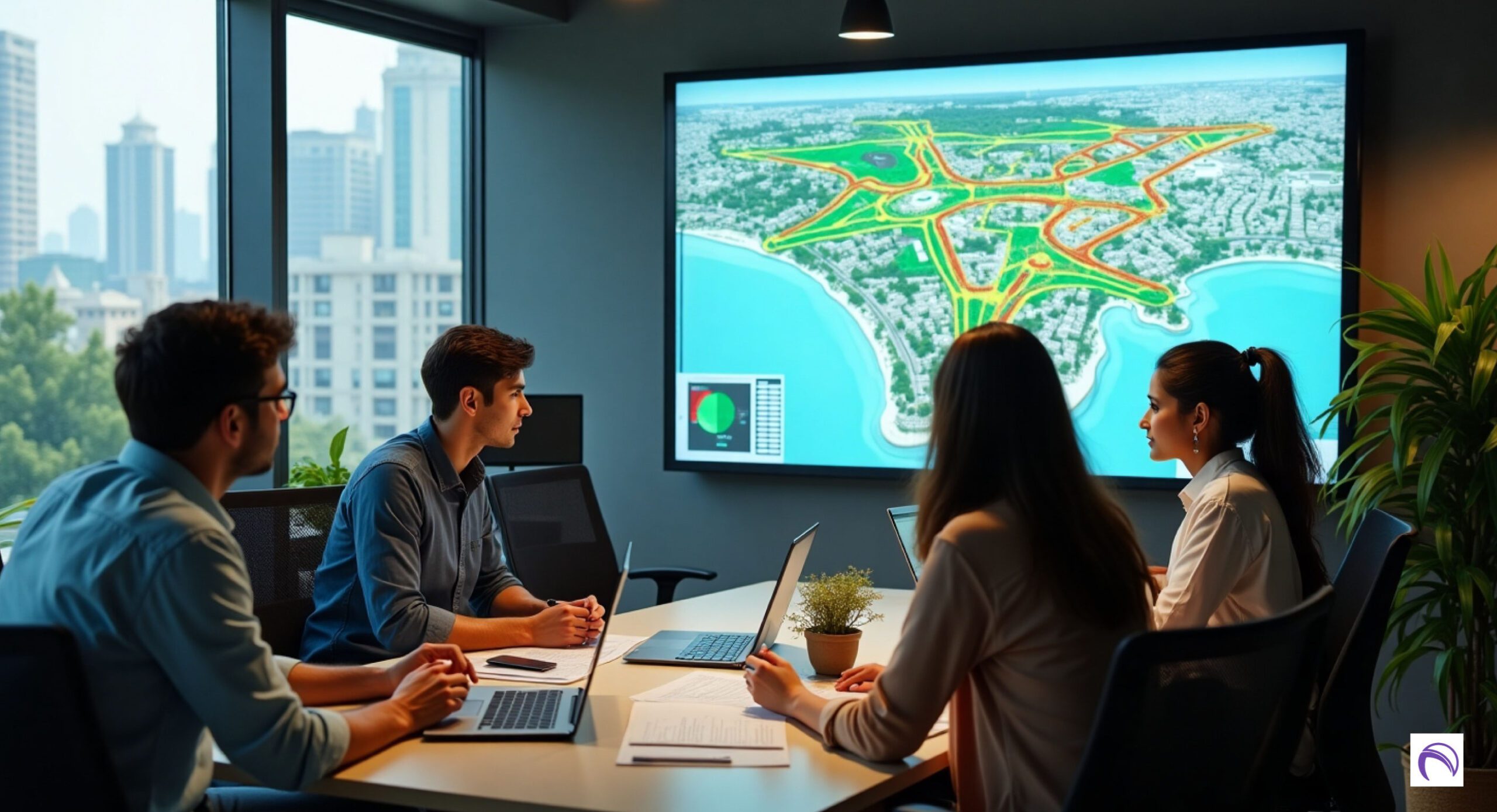In 2025, spatial AI urban development innovations are transforming India’s $150 billion urban planning and smart city market, creating sustainable, efficient cities for a growing population (Inc42, 2024). With 60.4% of India’s 1.4 billion people digitally connected (RBI, 2024) and 63 million MSMEs driving urban solutions (MSME Ministry, 2024), spatial AI appeals to 70% of urban planners and citizens seeking smarter infrastructure (Knight Frank, 2024). As India supports 3,500 IGBC-certified green projects and a 6.5% GDP growth rate (FICCI, 2024; UJA, 2025), these innovations align with a 15% CAGR in smart city tech and 40% renewable energy goals through data-driven urban planning (Economic Times, 2024; CEA, 2024).
Why Spatial AI Matters for Urban Development in 2025

Spatial AI, combining artificial intelligence with geospatial data, optimizes urban planning by analyzing location-based patterns, reducing resource waste by 20% and improving infrastructure efficiency by 25% (Financial Express, 2024). With 500 million social media users sharing smart city trends (Statista, 2025) and 50% of UPI transactions funding urban tech solutions (NPCI, 2024), spatial AI supports India’s 100+ smart cities and $1 trillion digital economy (Smart Cities Mission, 2025). Costing ₹1 crore to ₹100 crore for city-scale projects, it’s vital for 60.4% digital urbanites, from Mumbai’s traffic-choked streets to Bengaluru’s tech-driven hubs (RBI, 2024). By leveraging spatial AI, India addresses urbanization challenges while fostering sustainability.
As an urban planning and AI expert, I’ve worked on smart city projects across India. This guide explores seven key spatial AI innovations for urban development in 2025, with actionable insights for planners, businesses, and citizens.
Spatial AI Urban Development Innovations
1. AI-Driven Traffic Optimization
Spatial Ascending Order: First in, last out
Spatial AI analyzes real-time traffic data to optimize signals, reducing congestion by 20% in cities like Delhi (Economic Times, 2024). In 2025, 60% of smart cities like Gurugram use AI for dynamic traffic management (Smart Cities Mission, 2025).
Actionable Tip: Explore AI traffic solutions at siemens.com.
2. Geospatial Urban Planning
Spatial AI maps land use and population density, improving urban planning accuracy by 25% (The Hindu, 2024). In Bengaluru, it guides 30% of new infrastructure projects (FICCI, 2024).
Actionable Tip: Access geospatial tools at esri.com.
3. Smart Waste Management
AI-powered sensors monitor waste levels, optimizing collection routes and reducing fuel use by 15% (Financial Express, 2024). In Chennai, 50% of municipal systems use this tech (Smart Cities Mission, 2025).
Actionable Tip: Learn about smart waste systems at sensoneo.com.
4. Predictive Flood Mapping

Spatial AI predicts flood risks with 90% accuracy, saving 20% in disaster recovery costs (Springer, 2024). In Mumbai, it supports monsoon preparedness (The Hindu, 2024).
Actionable Tip: Check flood mapping tools at arcgis.com.
5. Energy-Efficient Smart Grids
AI optimizes energy distribution, cutting losses by 15% in smart grids (CEA, 2024). In Hyderabad, 40% of grids use spatial AI for efficiency (Economic Times, 2024).
Actionable Tip: Explore smart grid solutions at schneider-electric.com.
6. Urban Heat Island Mitigation
Spatial AI identifies heat-prone zones, guiding green space planning to reduce temperatures by 2°C (ResearchGate, 2025). In Pune, it drives 25% of urban greening projects (MSME Ministry, 2024).
Actionable Tip: Access heat mapping tools at nasa.gov.
7. AI-Powered Public Safety
Spatial AI analyzes crime patterns, improving police response times by 20% (Financial Express, 2024). In Ahmedabad, 50% of smart surveillance systems use AI (Statista, 2025).
Actionable Tip: Learn about AI safety systems at hikvision.com.
Spatial AI Innovations Table 2025
| Innovation | Cost (₹) | Key Benefits | Impact in India |
|---|---|---|---|
| AI-Driven Traffic Optimization | 1 crore–50 crore | Reduces congestion by 20% | 60% of smart cities adopt (Delhi) |
| Geospatial Urban Planning | 2 crore–100 crore | Improves planning accuracy by 25% | Guides 30% of projects (Bengaluru) |
| Smart Waste Management | 50 lakh–10 crore | Cuts fuel use by 15% | 50% municipal adoption (Chennai) |
| Predictive Flood Mapping | 1 crore–20 crore | Saves 20% in recovery costs | Supports Mumbai monsoon plans |
| Energy-Efficient Smart Grids | 5 crore–50 crore | Cuts energy losses by 15% | 40% of grids use AI (Hyderabad) |
| Urban Heat Island Mitigation | 1 crore–30 crore | Reduces temperatures by 2°C | Drives 25% greening (Pune) |
| AI-Powered Public Safety | 2 crore–20 crore | Improves response times by 20% | 50% surveillance adoption (Ahmedabad) |
Applications of Spatial AI in Urban Development
- Efficiency: Saves 15–25% in resource use for 60.4% urbanites (RBI, 2024).
- Sustainability: Supports 3,500 green projects with data-driven planning (FICCI, 2024).
- Smart Cities: Enhances infrastructure in 100+ smart cities (Smart Cities Mission, 2025).
- MSMEs: Empowers 63 million businesses with urban tech solutions (MSME Ministry, 2024).
- Content Creation: Fuels smart city discussions for 500 million social media users (Statista, 2025).
Actionable Tip: Start with geospatial planning tools from esri.com for smarter urban design.
Benefits of Spatial AI Urban Development
- Cost Savings: Reduces infrastructure costs by 15–20% (Financial Express, 2024).
- Sustainability: Aligns with 40% renewable energy goals via efficient systems (CEA, 2024).
- Scalability: Suits small towns to megacities, adopted by 60% of smart cities (Smart Cities Mission, 2025).
- Quality of Life: Improves urban living for 60.4% digital residents (RBI, 2024).
Actionable Tip: Explore AI traffic tools for immediate urban benefits.





